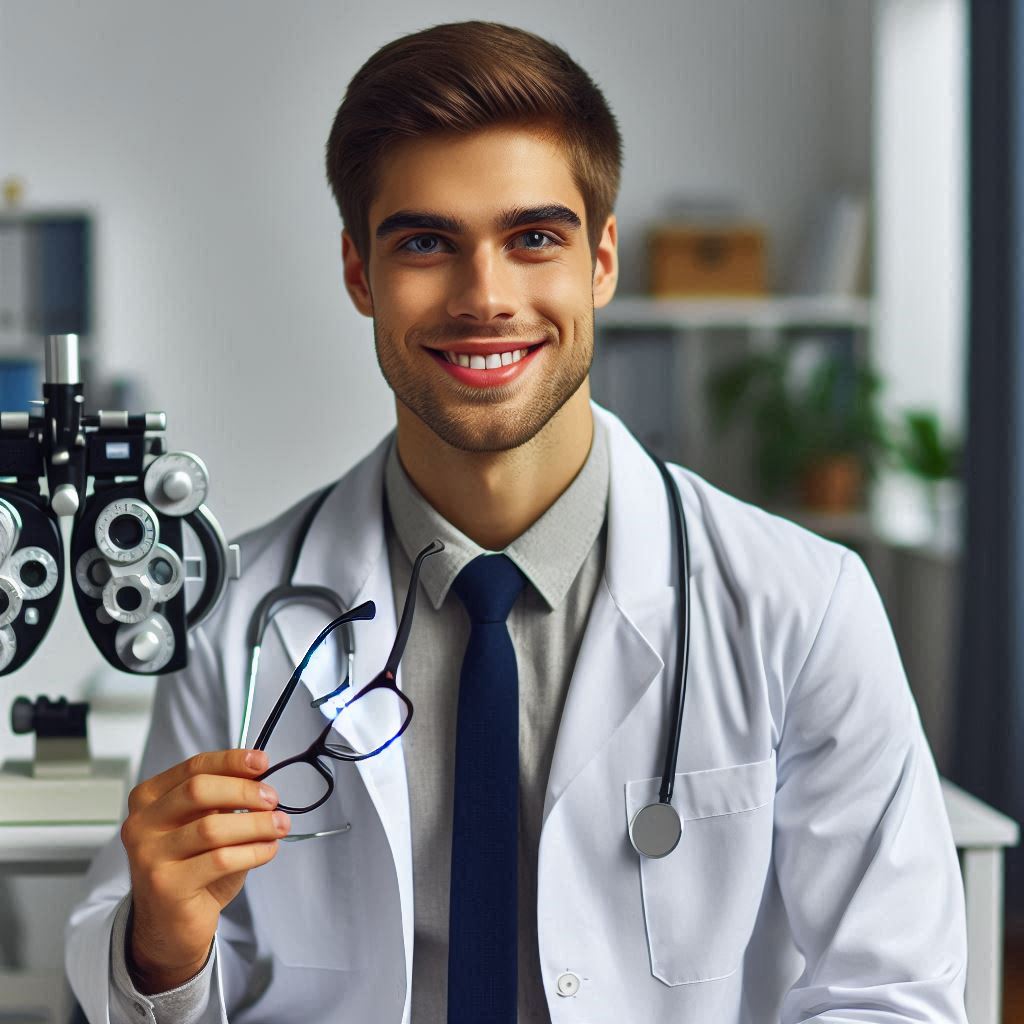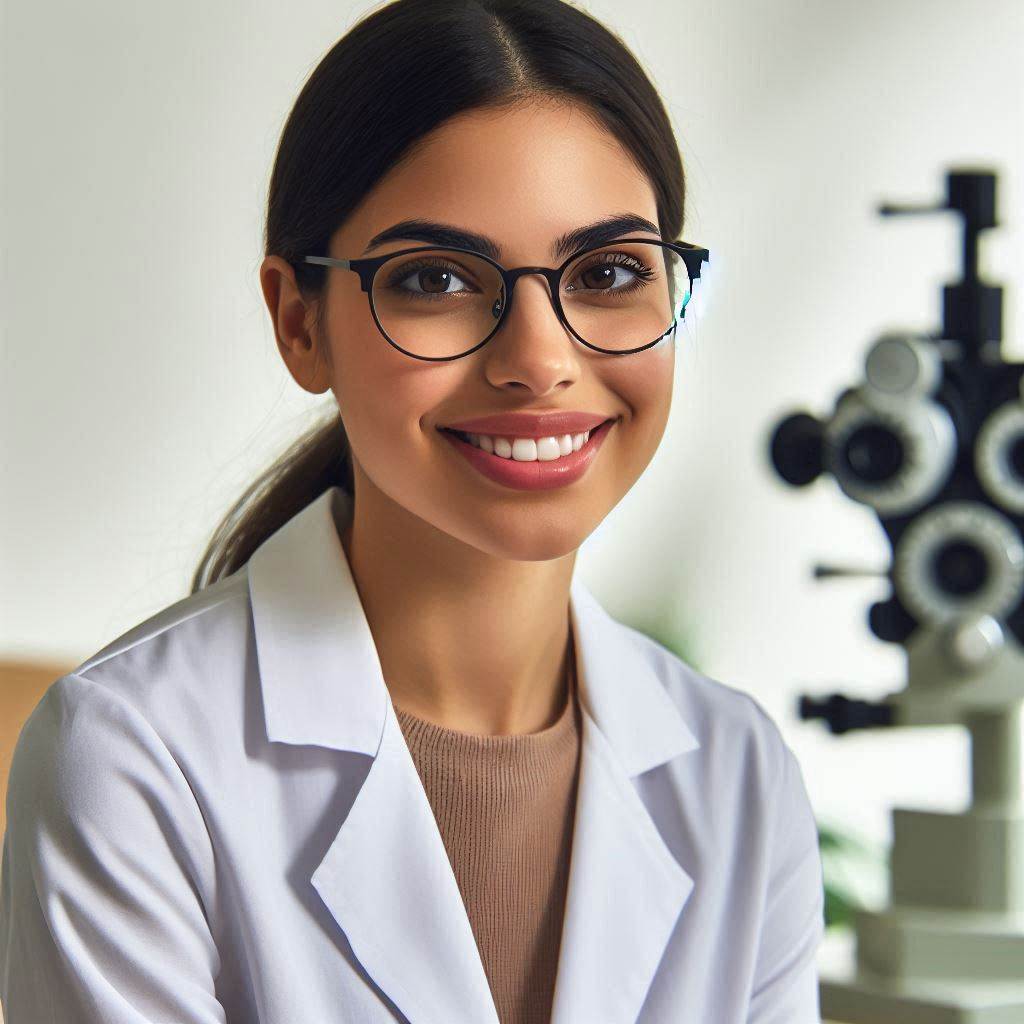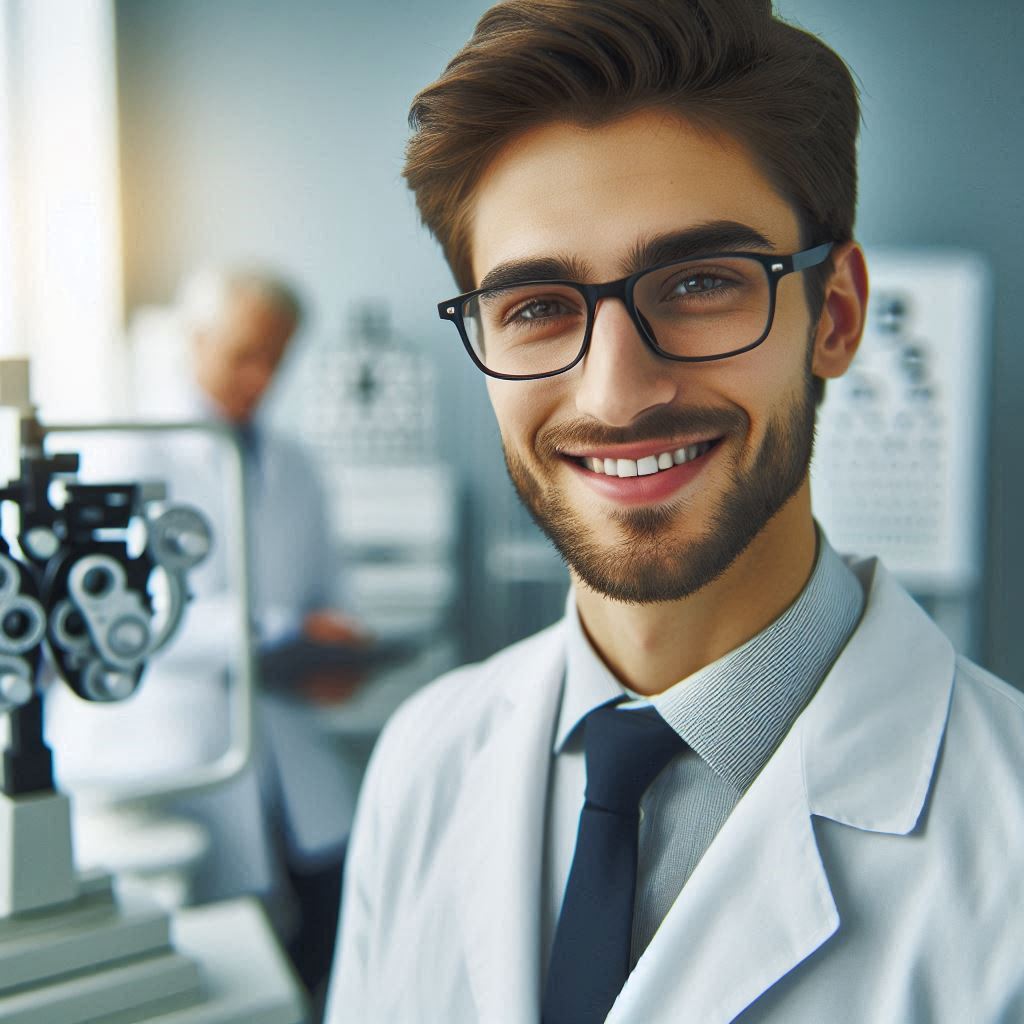Introduction
Regular vision tests and eye exams conducted by optometrists are crucial for maintaining optimal eye health.
They play a pivotal role in detecting potential vision problems at an early stage.
Early detection allows for timely intervention and management of conditions that could otherwise lead to more severe complications.
Visiting an optometrist for comprehensive eye exams goes beyond just checking visual acuity.
These exams assess various aspects of eye health, including the detection of conditions like glaucoma, cataracts, and macular degeneration.
They also evaluate overall eye function, which is essential for ensuring clear and comfortable vision in daily life activities.
The importance of these exams extends to people of all ages, from children to older adults.
For children, early detection of vision issues can prevent developmental delays and academic challenges.
In adults, regular exams help monitor changes in vision due to aging or other health conditions.
By understanding the significance of vision tests and comprehensive eye exams, individuals can prioritize their eye health and take proactive steps towards maintaining clear vision and overall well-being.
What to expect during a vision test
Different tests involved in a comprehensive vision exam
During a comprehensive vision exam, various tests are conducted to evaluate the overall health and function of your eyes.
These tests help optometrists assess your vision quality and identify any potential issues that may require further attention.
- Visual Acuity: This test measures how well you can see at various distances. You will be asked to read letters on a chart to determine your visual acuity.
- Depth Perception: This test assesses your ability to perceive the relative distance of objects. It helps determine how well your eyes work together to provide depth perception.
- Color Vision: This test evaluates your ability to differentiate between colors. It can help identify color blindness or other color vision deficiencies.
- Eye Muscle Movements: This test examines the coordination of your eye muscles. It assesses how well your eyes move and work together to follow objects and shift focus.
Importance of each test in assessing overall eye health and vision quality
Visual acuity tests can detect refractive errors like myopia (nearsightedness) and hyperopia (farsightedness).
It also helps determine the need for corrective lenses or updates to your current prescription.
Depth perception tests are crucial for activities like driving, sports, and everyday tasks that require accurate judgment of distance.
Poor depth perception can lead to difficulty in performing these activities safely.
Color vision tests are essential for identifying color blindness, which can impact daily life and certain professions that require accurate color perception, such as electricians or artists.
Eye muscle movement tests can reveal issues like strabismus (crossed eyes) or amblyopia (lazy eye).
Early detection and treatment of these conditions are vital for preventing vision problems in the future.
Overall, each of these tests plays a significant role in evaluating your eye health and vision quality.
Transform Your Career Today
Unlock a personalized career strategy that drives real results. Get tailored advice and a roadmap designed just for you.
Start NowBy undergoing a comprehensive vision exam with an optometrist, you can ensure that your eyes are healthy and functioning optimally.
Read: How to Choose the Right Optometrist for Your Needs
Importance of regular eye exams
Regular eye exams are essential for maintaining good eye health and ensuring optimal vision.
Frequency of Eye Exams
The recommended frequency for eye exams varies based on age and risk factors.
- Children should have their first eye exam at six months old, then again at age three and before starting school
- Adults between the ages of 20-39 should have an eye exam every 5-10 years
- Adults between 40-64 should have an eye exam every 2-4 years
- Adults 65 and older should have an eye exam every 1-2 years
Detection and Prevention of Vision Problems
Regular eye exams can help detect and prevent vision problems by identifying issues early on.
- Early detection of eye conditions such as cataracts, glaucoma, and macular degeneration
- Identification of refractive errors like myopia, hyperopia, and astigmatism
- Monitoring of changes in vision and addressing them promptly
Benefits of Early Detection and Treatment
Early detection and treatment of eye conditions through routine exams yield numerous benefits.
- Prevention of vision loss and complications associated with untreated eye conditions
- Improvement of overall eye health and quality of life
- Preservation of visual acuity and functionality for daily activities
- Cost-effective management of eye conditions by addressing them early
By emphasizing the importance of regular eye exams, individuals can prioritize their eye health and proactively address any vision concerns.
Read: Common Eye Conditions Treated by Optometrists
How optometrists perform eye exams
When you visit an optometrist for an eye exam, you are entrusting your eye health to a trained professional.
Optometrists play a crucial role in assessing your vision and overall eye health.
Role of an Optometrist in Conducting Eye Exams
An optometrist is a healthcare professional who specializes in examining the eyes and visual system.
During an eye exam, optometrists perform various tests to evaluate your vision, detect any underlying eye conditions, and prescribe corrective measures if needed.
Optometrists use a combination of techniques and tools to assess your eyes thoroughly.
These tests help determine your visual acuity, depth perception, color vision, and eye coordination.
Tools and Equipment Used During an Eye Exam
- Phoropter: A device with multiple lenses used to determine your eyeglass prescription.
- Slit Lamp: A binocular microscope used to examine the structures of the eye.
- Retinoscope: An instrument to assess how light reflects off the retina.
- Visual Field Analyzer: Checks peripheral vision and detects any blind spots.
- Autorefractor: Measures how light focuses on your retina for an objective prescription.
These tools help optometrists gather essential information about the health and function of your eyes.
Based on the results, they can recommend appropriate treatment or corrective measures to improve your vision.
Importance of Choosing a Qualified and Experienced Optometrist
Choosing the right optometrist is crucial for accurate results and proper eye care.
An experienced optometrist will have the knowledge and skills to conduct a comprehensive eye exam and diagnose any underlying eye conditions.
By selecting a qualified optometrist, you can ensure that you receive the best possible care for your eyes.
Showcase Your Business Today
Reach thousands of readers actively exploring professional services. Publish your business profile and grow your audience now.
Publish NowRegular eye exams by a trusted optometrist can help detect eye problems early, prevent vision loss, and maintain healthy eyesight.
Remember, your eyes are precious, and entrusting them to a skilled optometrist is the first step towards maintaining good eye health.
Read: Optometrist vs. Ophthalmologist: Key Differences Explained

Understanding Common Eye Conditions
Common eye conditions
When it comes to eye health, understanding common eye conditions is essential.
Optometrists play a crucial role in diagnosing and treating these conditions during eye exams. Here’s an overview of some common eye conditions:
Myopia
Myopia, also known as nearsightedness, is a common refractive error where distant objects appear blurred.
Optometrists diagnose myopia through a series of tests, including visual acuity and refraction tests.
Treatment options include prescription eyeglasses or contact lenses.
Hyperopia
Hyperopia, or farsightedness, is another refractive error where close objects appear blurred.
During an eye exam, optometrists use similar tests as with myopia to diagnose hyperopia.
Treatment may involve prescription eyeglasses or contact lenses, depending on the severity of the condition.
Astigmatism
Astigmatism is a refractive error caused by an irregularly-shaped cornea.
Optometrists detect astigmatism using tests like keratometry or corneal topography.
Treatment options include prescription eyeglasses, contact lenses, or in some cases, refractive surgery.
Presbyopia
Presbyopia is an age-related condition that affects near vision.
Optometrists diagnose presbyopia during an eye exam by assessing near vision and overall visual acuity.
Treatment typically involves prescription reading glasses or multifocal lenses to help with close-up tasks.
Diagnosing and Treating Common Eye Conditions
Optometrists have the expertise to diagnose and treat a wide range of eye conditions, including myopia, hyperopia, astigmatism, and presbyopia.
Here’s how they go about it:
Diagnosis Process
Optometrists use various tests to diagnose common eye conditions, such as visual acuity tests to assess how well you see at different distances.
Refraction tests help determine the exact prescription needed for corrective lenses, whether for myopia, hyperopia, astigmatism, or presbyopia.
Additional tests like keratometry or corneal topography may be conducted to identify specific issues like astigmatism.
Treatment Options
Based on the diagnosis, optometrists recommend suitable treatment options, such as prescription eyeglasses customized to correct the refractive error.
Contact lenses are another popular choice for correcting common eye conditions, offering both aesthetic and functional benefits.
In cases where refractive surgery is a viable solution, optometrists can provide referrals and post-operative care to ensure the best outcomes.
Discussing Symptoms and Concerns with Your Optometrist
During an eye exam, it’s crucial to communicate any symptoms or concerns you may have with your optometrist. Here’s why it matters:
- Early detection of eye conditions allows for prompt treatment and management to prevent further deterioration of vision.
- Informing your optometrist about any changes in your vision can help them adjust your prescription or treatment plan accordingly.
- Discussing symptoms like eye strain, headaches, or difficulty focusing can reveal underlying issues that require attention.
- Your optometrist relies on your feedback to provide personalized care and address any specific visual needs or challenges you may be experiencing.
Remember, your optometrist is your partner in maintaining good eye health.
By sharing any concerns or symptoms during your eye exam, you empower them to provide you with the best possible care tailored to your needs.
Read: Day in the Life of an Optometrist: Duties and Challenges
Factors affecting vision health
Lifestyle Factors Impacting Vision Health
Proper nutrition, regular exercise, and avoiding smoking can significantly impact your vision health.
A diet rich in vitamins and minerals, especially antioxidants like Vitamin C and E, can help prevent age-related vision problems.
Genetics and Aging Effects on Vision
Genetics play a significant role in determining your risk of developing certain eye conditions, such as glaucoma or macular degeneration.
As we age, the natural aging process can affect our vision, leading to presbyopia (difficulty focusing up close) or cataracts.
Discussing Family History and Lifestyle Habits
During an eye exam, it’s crucial to discuss your family history of eye conditions like glaucoma, diabetes, or macular degeneration.
Your optometrist will also inquire about your lifestyle habits, including diet, exercise, smoking, and screen time, to assess potential risk factors for vision problems.
By addressing these factors and making appropriate lifestyle changes, you can proactively protect your vision health and maintain optimal eyesight throughout your life.
Prescription Eyewear and Contact Lenses
Overview of how Optometrists Determine the Need for Prescription Eyewear or Contact Lenses
Optometrists determine the need for prescription eyewear or contact lenses through comprehensive eye examinations.
They use various tests to assess the visual acuity, refractive error, and overall health of the eyes.
Based on the results of these tests, optometrists can prescribe corrective lenses to improve vision.
Patients may need prescription eyewear if they have myopia (nearsightedness), hyperopia (farsightedness), astigmatism, or presbyopia.
Showcase Your Business Today
Reach thousands of readers actively exploring professional services. Publish your business profile and grow your audience now.
Publish NowContact lenses may be recommended for those who prefer a more discreet or active lifestyle.
Explanation of the Different Types of Lenses Available for Various Vision Needs
There are several types of lenses available for different vision needs, including single vision, bifocal, trifocal, and progressive lenses.
Single vision lenses are used to correct one type of refractive error, such as nearsightedness or farsightedness.
Bifocal lenses have two distinct areas to correct both near and distance vision.
Trifocal lenses have three areas to correct near, intermediate, and distance vision.
Progressive lenses provide a seamless transition between different focal lengths for a natural vision experience.
Importance of Following the Optometrist’s Recommendations for Prescription Eyewear Usage
It is crucial to follow the optometrist’s recommendations for prescription eyewear to maintain optimal eye health.
Wearing the correct prescription lenses can prevent eye strain, headaches, and other vision-related problems.
Improper use of prescription eyewear can worsen existing vision issues or cause new ones to develop.
Regular follow-up appointments with the optometrist can help monitor changes in vision and update prescriptions as needed.
In a nutshell, prescription eyewear and contact lenses play a vital role in correcting refractive errors and improving visual acuity.
By following the optometrist’s recommendations for eyewear usage, patients can enjoy clear vision and maintain good eye health.
Conclusion
Vision tests and eye exams by optometrists are crucial for maintaining good eye health and overall well-being.
Regular check-ups can detect any issues early on and prevent further complications.
We encourage all readers to make it a priority to schedule regular eye exams with a qualified optometrist.
Your eyes are precious and deserve proper care to ensure a high quality of life.
Remember, your eyes are essential for daily functioning and quality of life. Take charge of your eye health and make it a priority.
Don’t wait until you notice a problem.
[E-Books for Sale]
The Big Book of 500 High-Paying Jobs in America: Unlock Your Earning Potential
$19.99 • 500 High-Paying Jobs • 330 pages
Explore 500 high-paying jobs in America and learn how to boost your career, earn more, and achieve success!
See All 500 High-Paying Jobs of this E-Book
1001 Professions Without a Degree: High-Paying American Jobs You Can Start Now
$19.99 • 1001 Professions Without a Degree • 174 pages
Discover 1001 high-paying jobs without a degree! Unlock career tips, skills, and success strategies for just $19.99!




